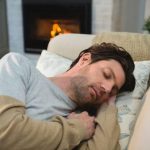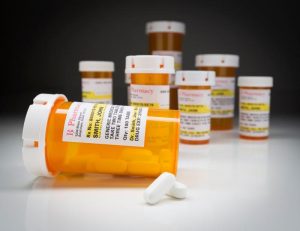Nearly 20% of American adults use a drug to help them sleep, either occasionally or regularly, health officials reported Wednesday.
Sleep medications, sold both over-the-counter and by prescription, are a common treatment for sleep problems, said senior report author Lindsey Black, a health statistician at the U.S. Centers for Disease Control and Prevention’s National Center for Health Statistics (NCHS).
“Our report details patterns of use of medication to inform patterns of use among subgroups of the U.S. population,” Black said. “We do hope by dissemination of this report it can lay the groundwork for more work in this area and our understanding of sleep health among adults.”
Using data from the 2020 National Health Interview Survey, Black and colleagues found that among adults ages 18 and older, 8.4% used medication to help them fall or stay asleep on most nights or every night. Another 10% said they used medication on some nights.
Women were more likely than men to take medication for sleep and the percentage doing it generally increased with increasing age.
Specifically, 10% of women used sleep medication, compared with 6.6% of men. White adults were more likely to use sleep medications, and Asian adults were least likely to do so. Also, the percentage of men who used medication for sleep dropped as family income increased, Black’s team found.
The findings were published Jan. 25 as an NCHS Data Brief.
One expert wasn’t at all surprised by the number of Americans who rely on sleep medications.
“I work in a sleep center. And you know, I certainly see a lot of sleep medication use,” said Lauren Broch, a clinical sleep psychologist at the Northwell Health Sleep Disorders Center in Great Neck, N.Y.
Broch thinks not only are sleep medications (both prescription and over-the-counter) overused but also poorly used.
Prescription drugs like temazepam (Restoril), triazolam (Halcion), zaleplon (Sonata), eszopiclone (Lunesta) and zolpidem (Ambien, Edluar, ZolpiMist) were designed to be used in the short term, not as a long-term crutch.
The same is true for over-the-counter sleep aids, many of which contain the antihistamine diphenhydramine, the active ingredient in Benadryl.
People who use these medications habitually come to rely on them, Broch said.
“Many people start believing that the sleep medication is what is making them sleep,” she said. “There’s a dependence on them, and sometimes tolerance, and they believe that they must use it or they won’t sleep. That’s never a good thing.”
Sleep medication also can have side effects, Broch said. They can leave you drowsy during the day. “They didn’t do all that much good because you feel tired,” she noted.
“There are certainly side effects, slowness of thought, dependence on them, feeling sleepy — sometimes dangerously,” Broch said.
Some of these drugs can also interact with other medications you may be taking, she said.
Broch believes that sleep medications have their place as you retrain yourself to develop better sleep habits. One place to start is cognitive behavioral therapy, which can help build new sleep habits.
Seeing a professional at a sleep center is another way to get help, especially if your sleep problems are severe.
Broch also advises practicing good sleep hygiene. This includes having a set bedtime and keeping the bedroom dark and cool. Don’t have distractions like smartphones, tablets, TVs or other electronic devices in the bedroom. Also, do not spend non-sleep time in bed.
“The more durable way to help your sleep is to learn better habits,” Broch said. “And to educate yourself about sleep.”
More information
For more on sleep medications, see the Sleep Foundation.
SOURCES: Lindsey Black, MPH, health statistician, National Center for Health Statistics, U.S. Centers for Disease Control and Prevention; Lauren Broch, PhD, clinical sleep psychologist, Northwell Health Sleep Disorders Center, Great Neck, N.Y.; CDC’s NCHS Data Brief: Sleep Medication Use in Adults Aged 18 and Over: United States, 2020, Jan. 25, 2023
Copyright © 2024 HealthDay. All rights reserved.

-300x200.jpeg)









-300x241.jpeg)




